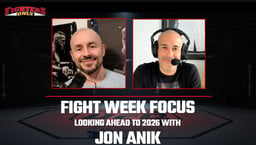
Issue 075
May 2011
Professional fighter Rosi Sexton is a sports therapist and osteopath-in-training. She has fought in countries such as Russia, Canada and the USA, and is ranked as one of the top competitors in her weight class. For more information contact her by email at [email protected] or go to: www.rosisexton.wordpress.com/sports-therapy
What is an orbital fracture?
The ‘orbit’ is composed of the seven bones that come together to form the eye socket. A fracture to any of these bones may be described as a ‘fractured orbital.’ This most commonly happens as a result of direct trauma.
Within the orbit area there are also numerous delicate structures that may be damaged. As well as the eyeball itself, there are several important nerves and arteries, plus muscles that move the eye.
The weakest part of the orbit is the section below the eye itself. A blow to the eye can suddenly increase pressure on this bony and relatively weak floor of the eye socket, causing it to be pushed through into one of the sinuses. This is known as a ‘blow-out’ fracture. When this happens, sometimes the tissues surrounding the eye can get pushed through the gap caused, and become trapped.
A different type of orbital fracture occurs when the orbital rim (the ring you can feel around your eye) is damaged as a result of trauma. This includes fractures of the zygomatic arch (cheekbone), which may lead to a ‘sunken’ or flat appearance of that particular cheek.
What are the symptoms of a fractured orbital?
Most obviously, there will be bruising and swelling around the eye socket accompanied by extreme tenderness and pain. There may be some loss of vision, double vision or difficulty in looking in certain directions. Numbness or tingling around the face could be a sign of damage to other facial nerves.
A fracture between the orbit and one of the sinuses can also allow air to pass through the gap. This can cause an odd sensation around the eye when the fighter blows his nose, or a ‘puffed-up’ appearance round the eye.
Who has it happened to?
Josh Koscheck famously suffered from a fractured orbital that occurred in the first round of his title fight against Georges St Pierre at UFC 124. He was unable to fly home due to a trapped pocket of air behind the fractured orbital bone which meant that the changes in air pressure on takeoff and landing would be dangerous.
Lyoto Machida also suffered from a hairline orbital fracture when he was KO’d by Mauricio ‘Shogun’ Rua at UFC 113. In boxing, Antonio Margarito suffered a fractured orbital during his loss to Manny Pacquiao in November of last year.
What’s the treatment?
The important first step is to identify the severity of the injury. For suspected facial fractures, a CT scan (computerized tomography, a special x-ray) is usually the first choice. It’s also important to do a thorough examination of the fighter’s vision and the eye itself to identify any problems.
The most straightforward fractures may not require any treatment other than rest, and will heal by themselves. For other fractures, surgery may be required. Often, this is not performed immediately but may be delayed for a couple of weeks following the injury until the swelling has subsided. Sometimes plates, wires, mesh or bone grafts are used to help stabilize the area.
What serious or long term problems is it likely to cause?
Depending on the severity of the injury, there may be some permanent vision loss and possibly some numbness over part of the face. If there was double vision at the time of the injury, then this may or may not be corrected following surgery.
There is also the possibility of infection. The most common type is a sinus infection, but with certain fractures, there is a small possibility of spinal fluid leaks which can result in meningitis – a serious and potentially life-threatening infection of the tissues surrounding the brain.
How long can a fighter expect to be out for?
The swelling and bruising is likely to go away within ten to 14 days of the injury, but the broken bones will take longer to repair themselves. An uncomplicated fracture is likely to take around six weeks to heal. During this time, it is important that the fighter avoid any contact to the face or head to prevent further damage.
If surgery is required, then this is likely to increase the recovery time needed depending on how soon the operation is performed and the type required.
In rare cases, if there is severe damage to the eye itself or to the structures around the eye, the injury may prove to be career ending.










